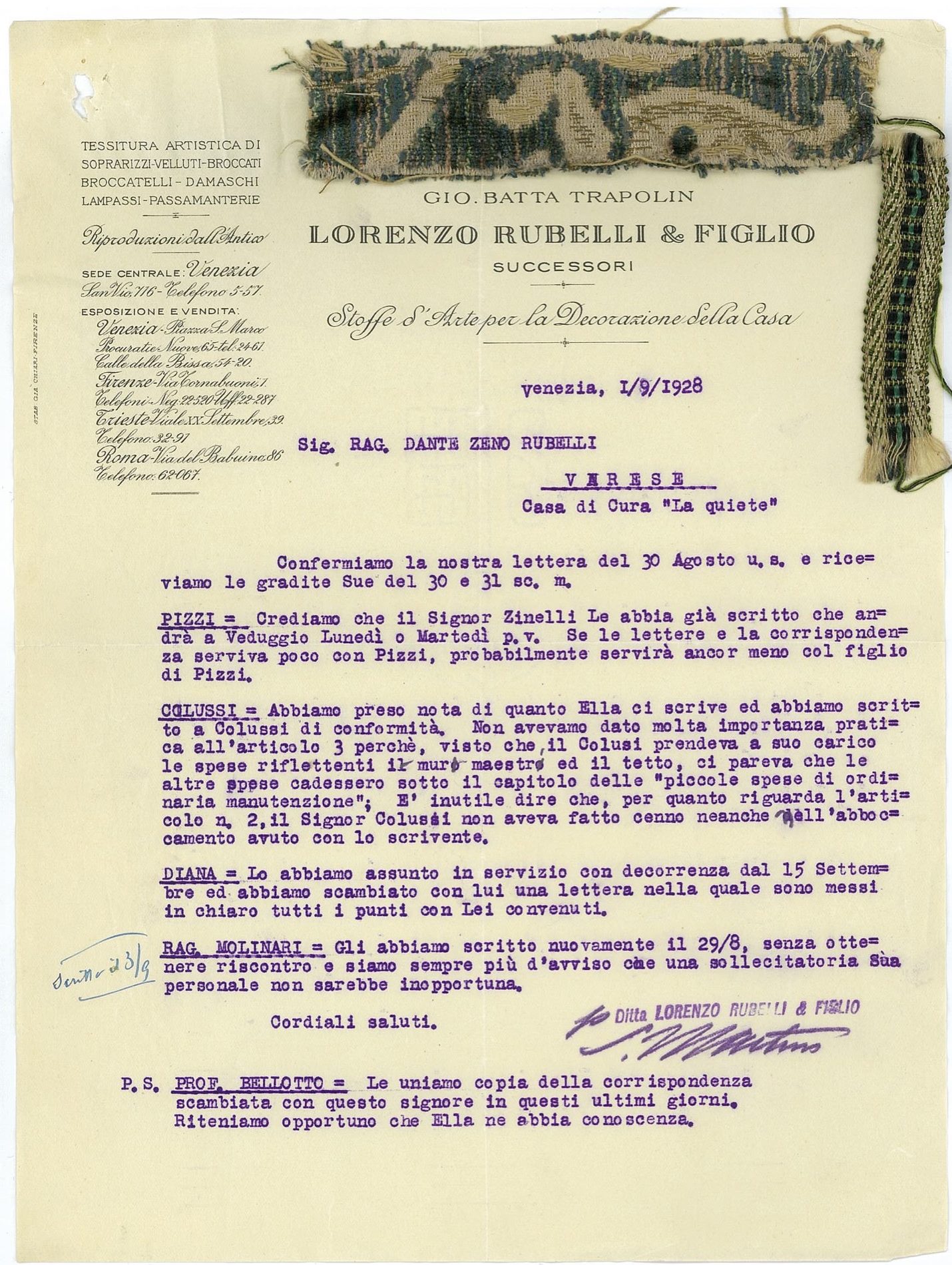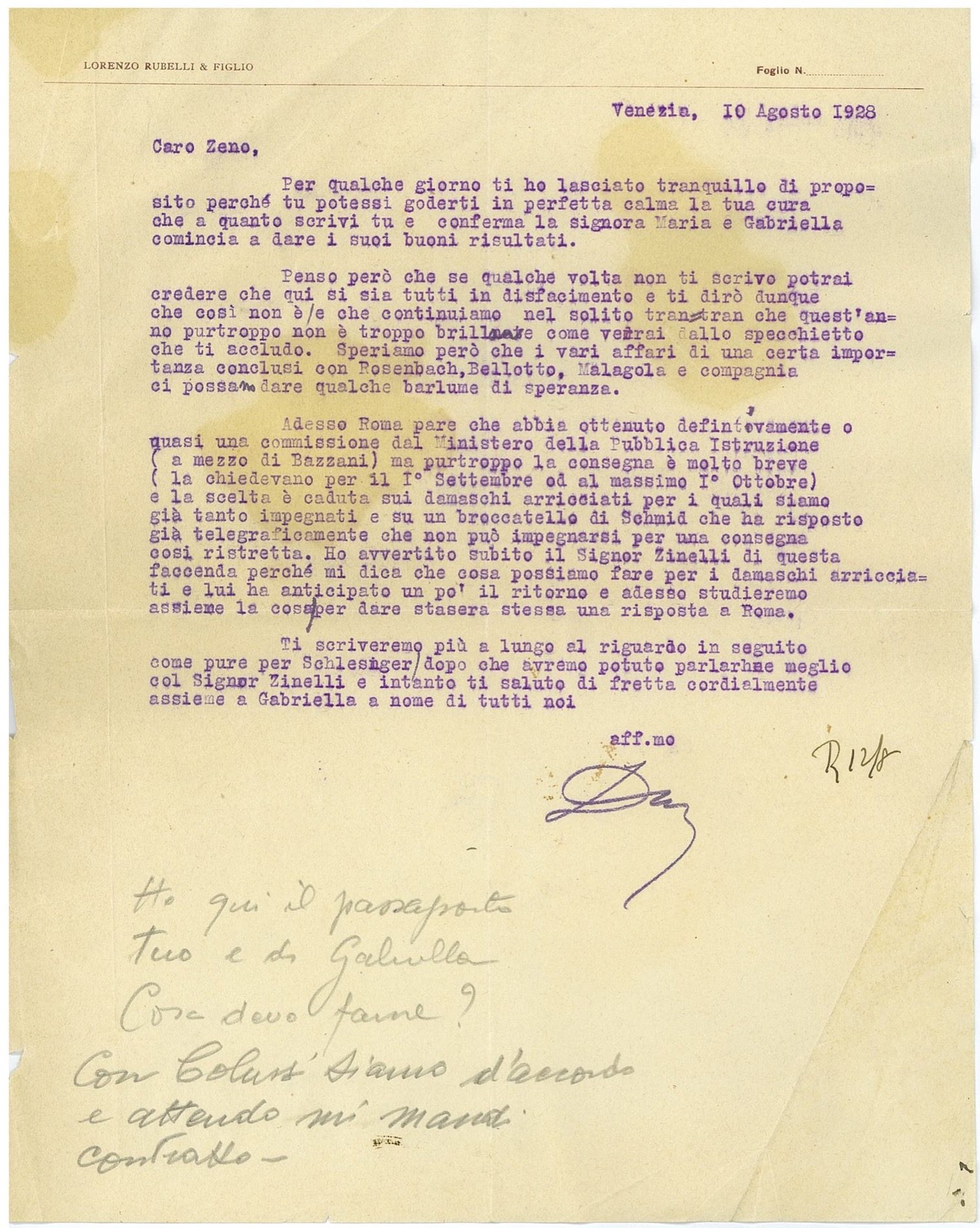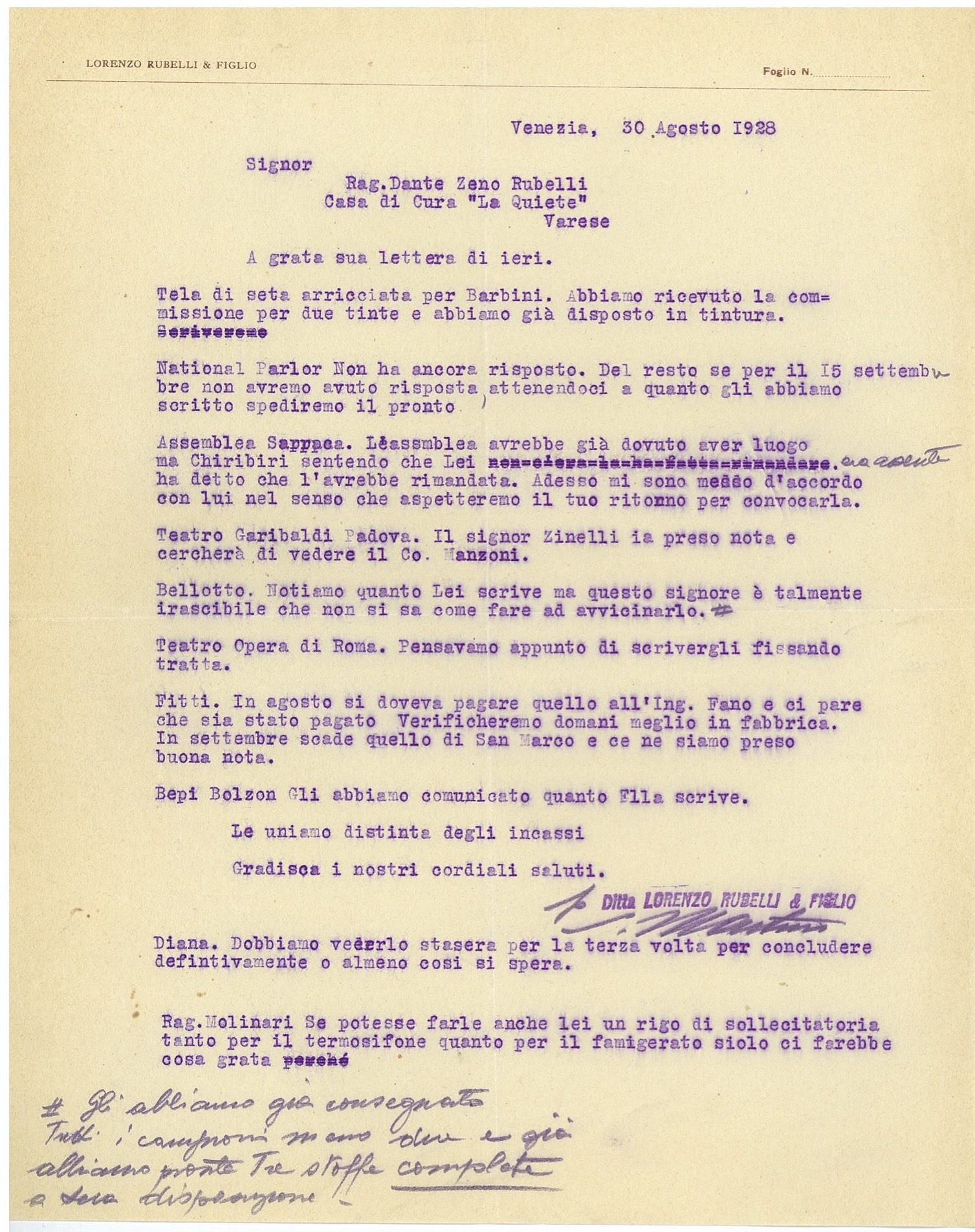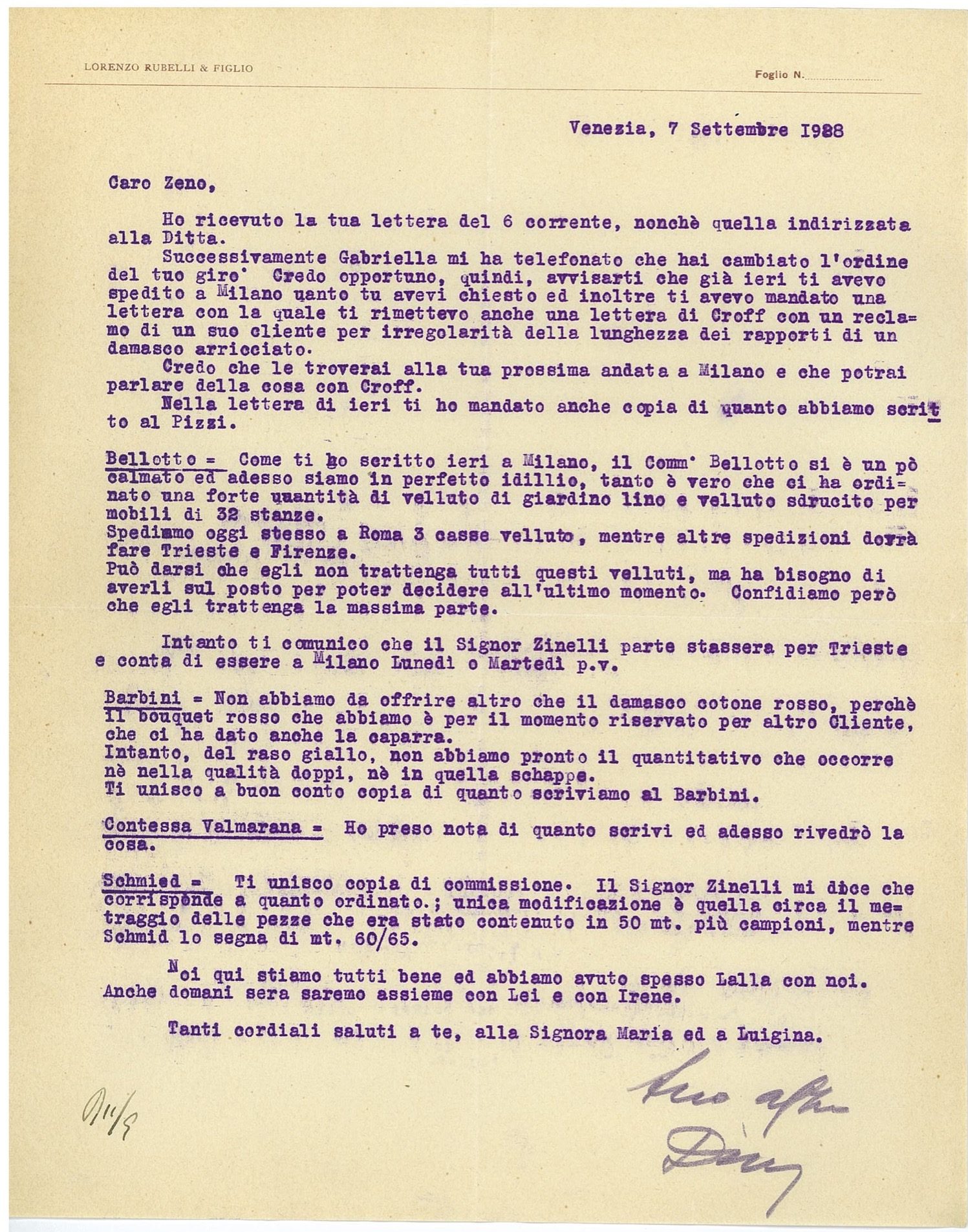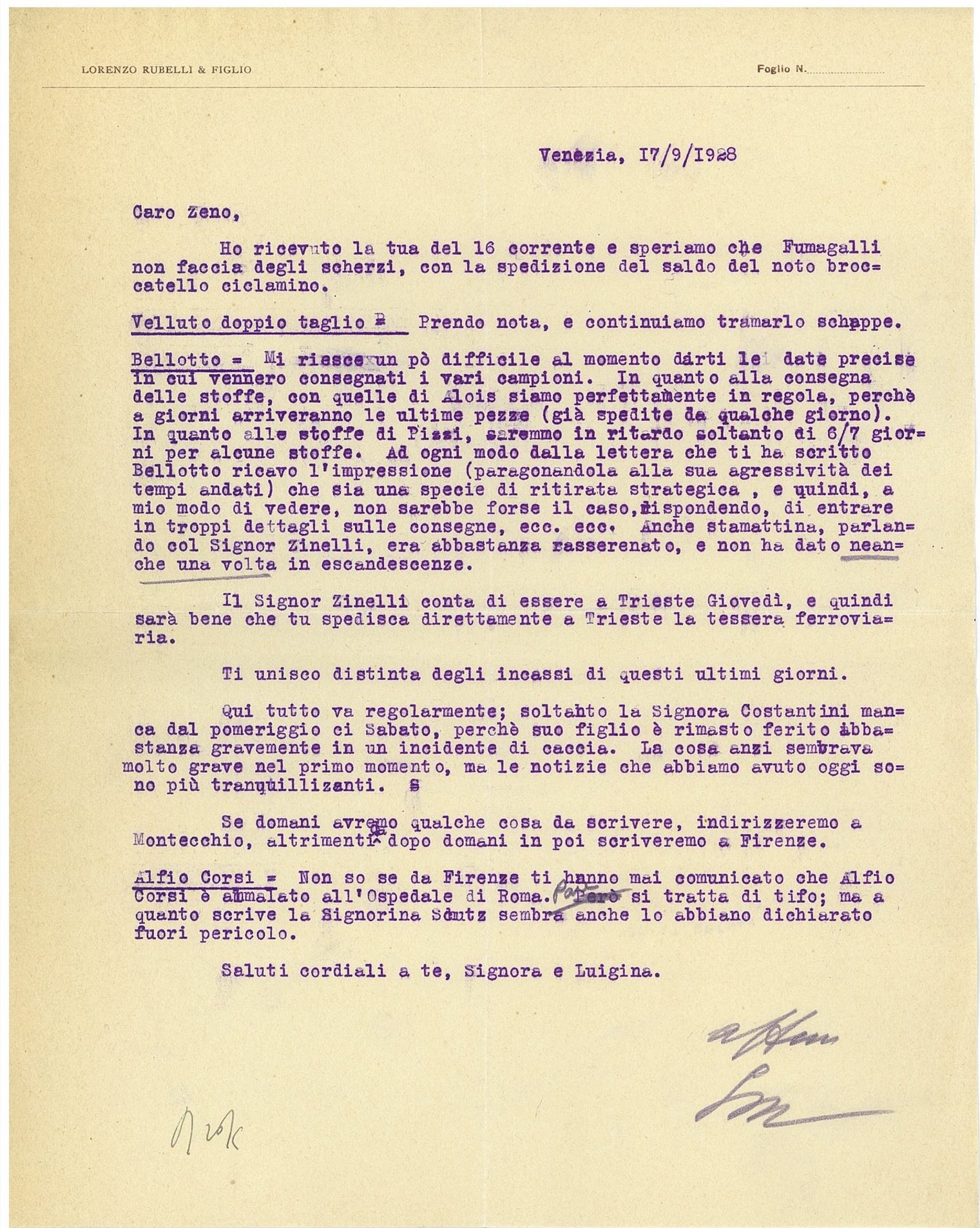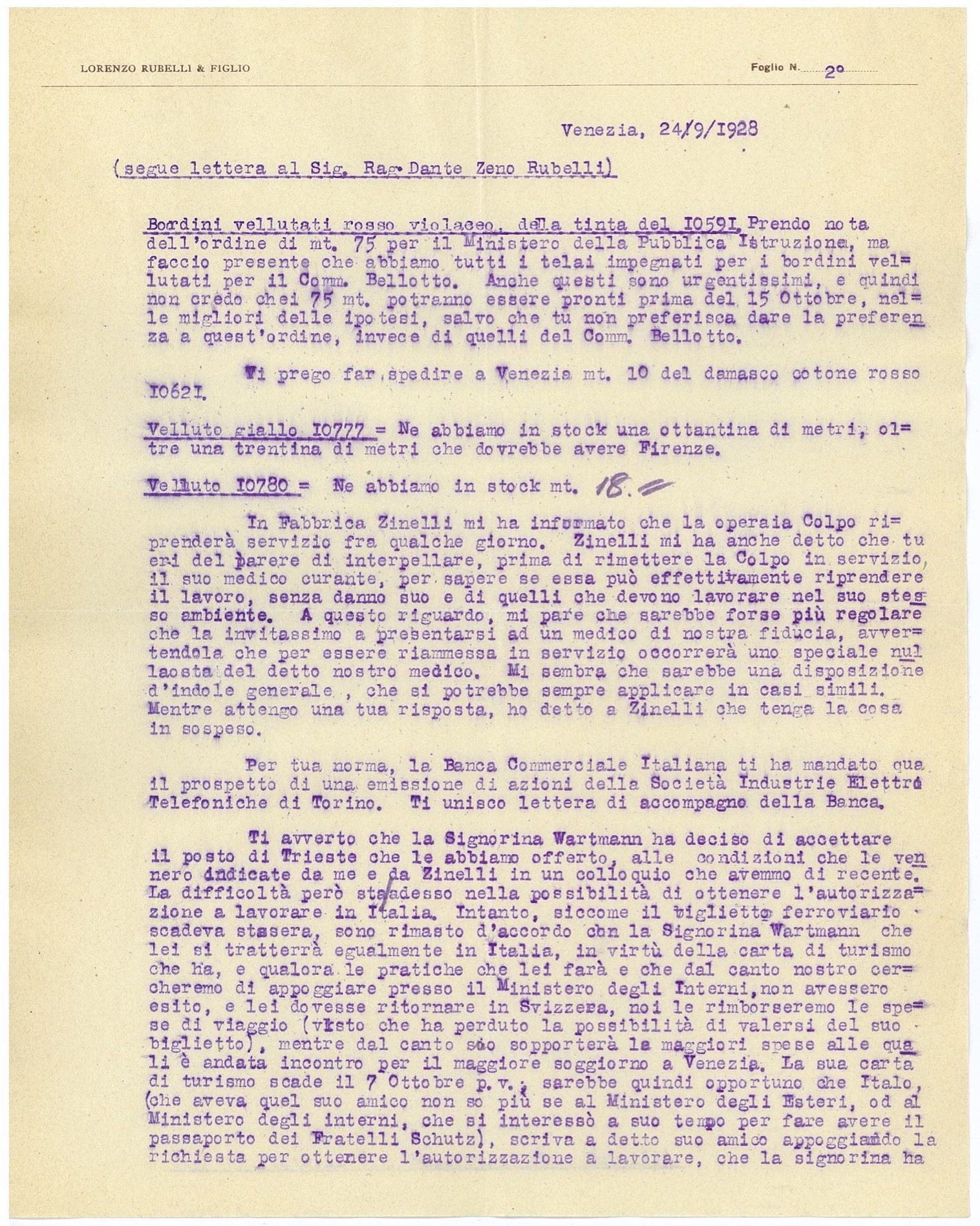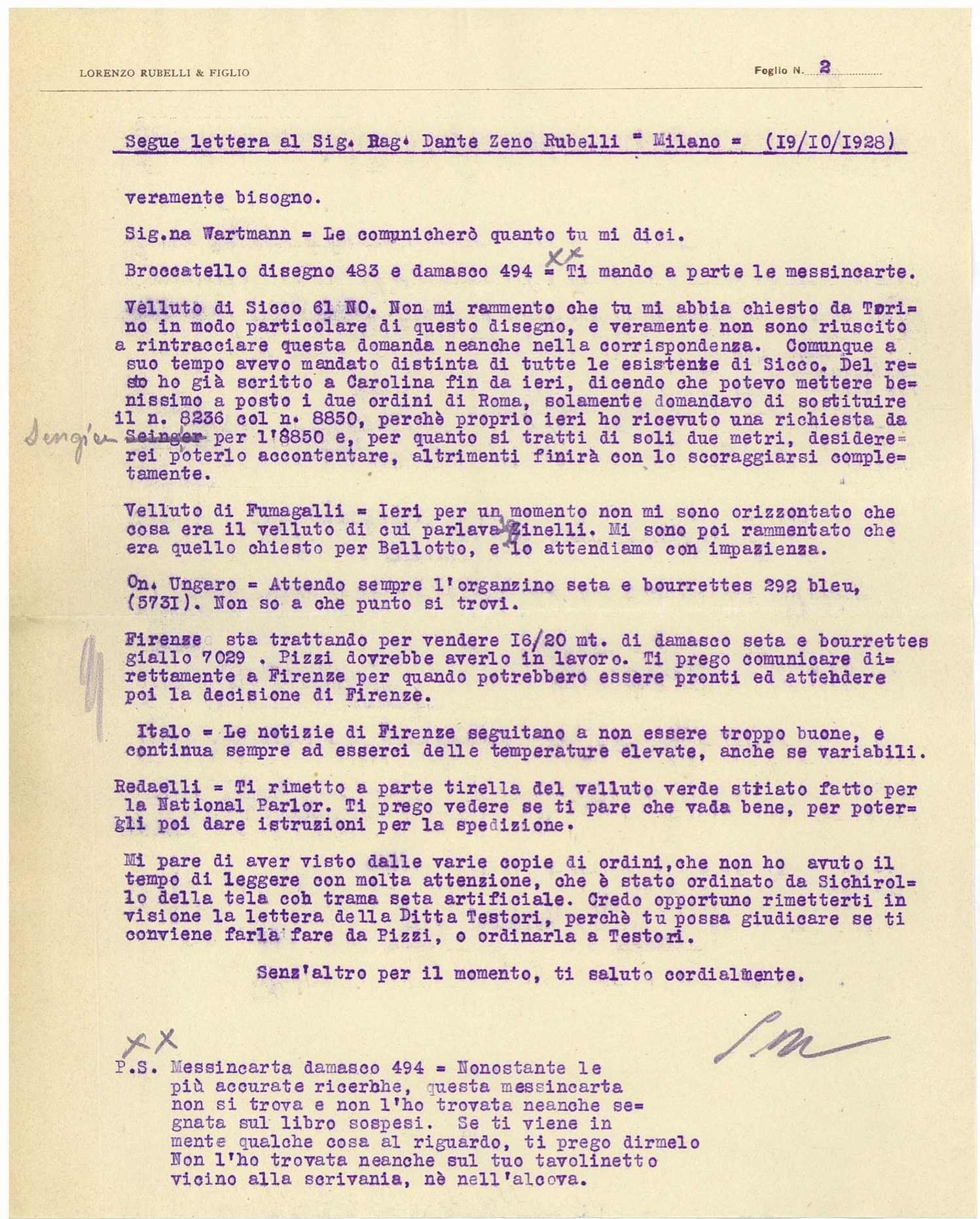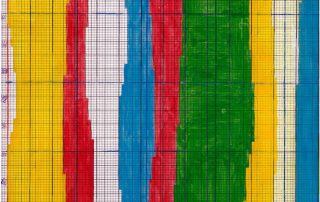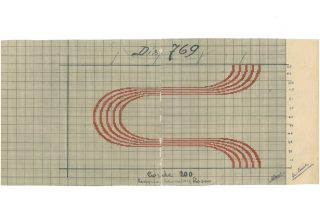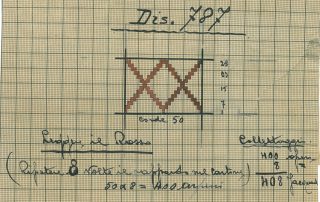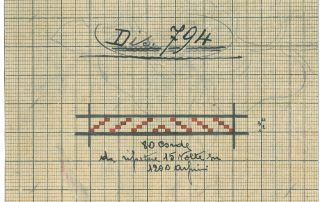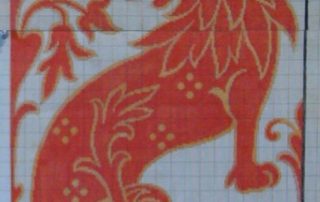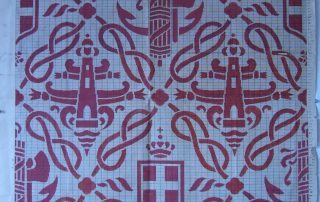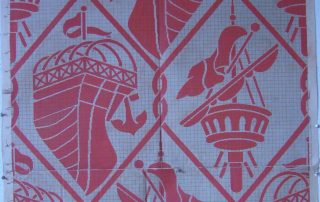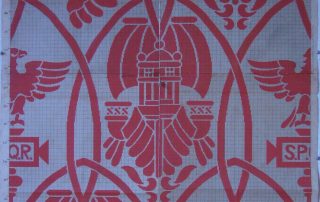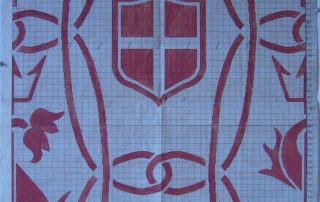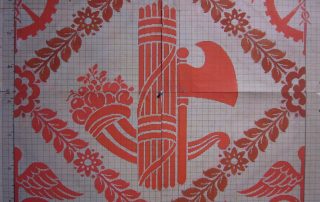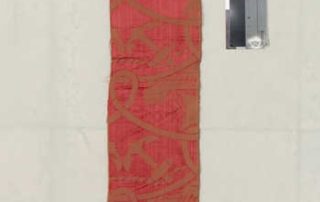It was in 1928 that Umberto Bellotto, the genius artist who was able to make iron as light as glass, was called upon by the Minister of Public Works, Giovanni Giuriati, a Venetian like himself, to design and supervise the decoration of the capital’s public buildings.
As an artist deeply rooted in materiality — and therefore particularly attentive to manufacturing techniques and the composition of materials — Bellotto surrounded himself from the beginning with the best collaborators, including his fellow citizen Rubelli, with whom he had collaborated for several years and whose fabrics would later furnish numerous rooms in the Ministry of the Navy.
In the archives, the first mention of this renewed association is a note dated August 10, 1928, in which Bellotto appears in a list of newly acquired orders, while another note dated three days later mentions the 12 meters of “figured velvet” fabric just ordered by the artist. These are the first traces of a relationship that became very intense towards the end of 1928 and, as is often the case between creative minds, was marked by quarrels and mood swings. A volcanic genius, Bellotto sometimes went over the top, alternating between – as we read in the documents – abrupt outbursts during which “one did not know how to approach him” with moments of “strategic retreat” that could even lead to a “perfect idyll”. A precarious idyll that was undoubtedly made possible by the seriousness and punctuality with which Rubelli used all his resources, involving – as the documents tell us once again – some of his best collaborators, such as the Fumagalli and Pizzi textile factories.
During the first three months of his work at the Ministry, Bellotto created the decorations for about seventy rooms of which unfortunately – as was the case with so many of his works in Venetian homes – war and the vicissitudes of time have not allowed any preservation nor any trace to remain. Fortunately, a sample of the work and numerous weaving paper patterns have survived, which, among the dust of the archives, offer us proof of the beauty conceived and created for these rooms.
This is the burden and merit of memory; someone lives it, and passes it on.
